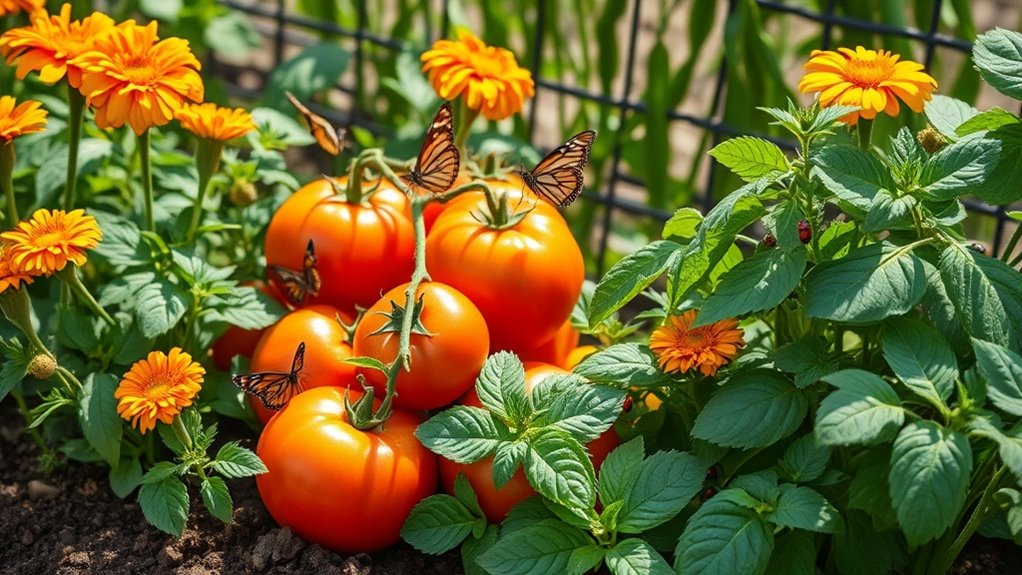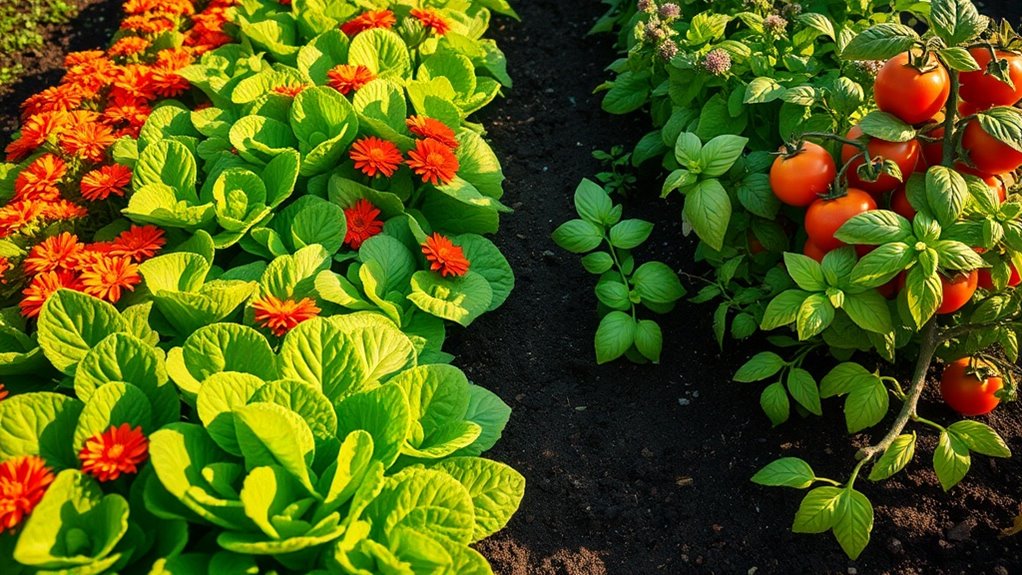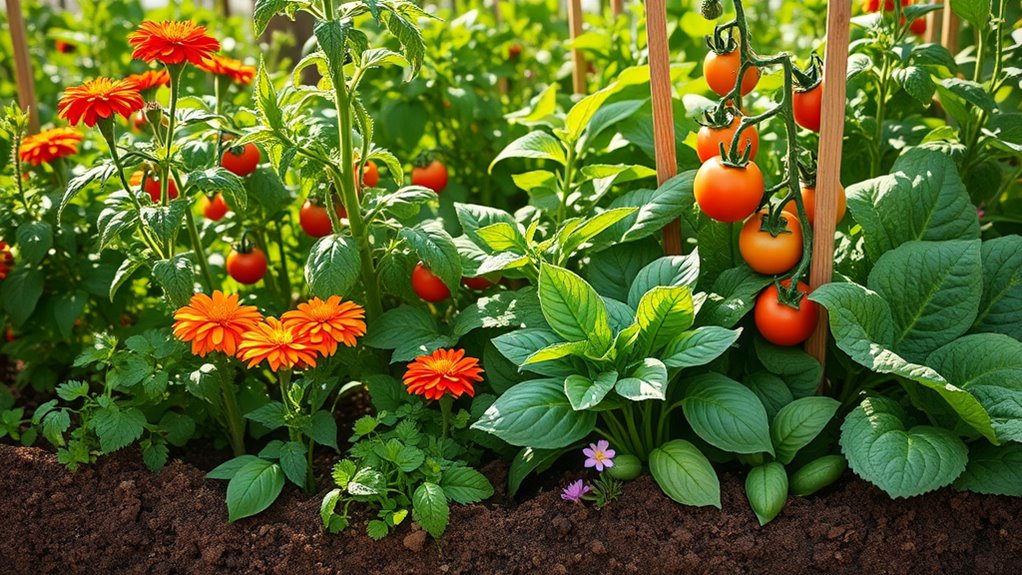What to Plant Side-by-Side for Maximum Harvest
To maximize your harvest, plant tomatoes alongside basil for enhanced flavor and pest control. Pair carrots with onions to deter pests without competing for nutrients. Beans and corn work well together, as beans fix nitrogen to support corn growth. Additionally, consider adding herbs like dill, which attract beneficial insects, and marigolds that repel harmful pests. These companion planting strategies can greatly boost your garden’s productivity and health. Keep exploring to discover even more effective pairings!
Understanding Companion Planting Principles
Companion planting is a gardening strategy where certain plants are grown together to enhance growth, deter pests, and maximize harvest.
By understanding companion planting principles, you can create effective plant pairings that benefit each other.
For instance, some plants naturally repel pests that might harm their neighbors, while others can improve soil nutrients or provide shade. Research shows that growing basil near tomatoes can boost flavor and repel pests, while carrots and onions can deter each other’s pests. Additionally, this pairing is known to improve overall plant health and resilience, making it a great example of the power of basil and tomato pairing.
Top Vegetable Pairings for Enhanced Growth
When planning your vegetable garden, pairing certain crops can greatly boost their growth and overall yield.
For instance, plant tomatoes alongside basil; basil enhances tomato flavor and repels pests.
Similarly, carrots and onions make excellent companions, as onions deter carrot flies while carrots don’t compete for nutrients.
You’ll also benefit from planting beans with corn; beans fix nitrogen in the soil, helping corn thrive.
Additionally, peppers and eggplants can coexist well, sharing similar growing conditions. Incorporating companion planting techniques can lead to an even more productive garden by maximizing the benefits of these pairings.
Herbs That Boost the Health of Neighboring Plants
Planting herbs like basil, dill, and cilantro alongside your vegetables can greatly improve their growth. Basil, for instance, helps tomatoes thrive by repelling pests and enhancing flavor. Dill attracts beneficial insects that can aid your crops’ pollination efforts. Meanwhile, cilantro can offer shade to struggling plants and deter harmful pests. Additionally, using companion planting strategies can increase your garden’s overall health and productivity.
Flower and Vegetable Combinations for Pest Control
Integrating flowers into your vegetable garden can greatly enhance pest control efforts. Marigolds, for example, repel nematodes and other pests with their strong scent. Planting nasturtiums alongside cucumbers can deter aphids and cucumber beetles. Consider adding borage near tomatoes; it attracts beneficial insects like bees and can even improve tomato flavor. Zinnias and cosmos also attract pollinators while keeping harmful pests at bay. When you combine these flowers strategically, you’ll create a vibrant ecosystem that supports your veggies and reduces the need for chemical interventions. Companion planting techniques can lead to even greater benefits for your garden. Embrace these combinations to cultivate a healthier, more productive garden.
Maximizing Soil Health Through Strategic Planting
What if you could boost your garden’s productivity simply by planting the right combinations? Strategic planting not only maximizes your harvest but also enhances soil health. Interplanting legumes with deep-rooted crops can improve nitrogen levels, while companion planting with herbs like basil can repel pests. Here’s a simple guide to help you:
| Crop Pairing | Benefits | Best Season |
|---|---|---|
| Tomatoes & Basil | Pest control, flavor boost | Summer |
| Carrots & Onions | Natural pest repellents | Spring/Fall |
| Beans & Corn | Nitrogen fixation, support | Summer |
| Spinach & Strawberries | Space utilization | Spring |
| Cabbage & Dill | Growth enhancement | Spring/Fall |
These combinations lead to healthier soil and more abundant harvests. Implementing companion planting techniques can provide surprising results that will inspire your gardening journey.





